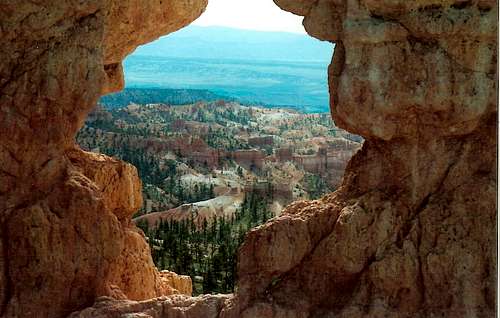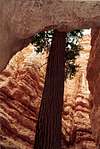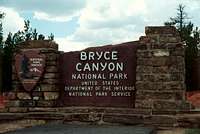-
 20309 Hits
20309 Hits
-
 91.21% Score
91.21% Score
-
 36 Votes
36 Votes
|
|
Area/Range |
|---|---|
|
|
37.54893°N / 112.27478°W |
|
|
Hiking |
|
|
Spring, Summer, Fall, Winter |
|
|
Overview
Bryce Canyon will leave you standing at its rims over the red, brown, orange, yellow, and white hoodoos with a fallen bottom jaw. The thousands of oddly shaped pinnacles of rock that make up the canyon’s walls and floor make Bryce Canyon so unique. The hoodoos found in Bryce are smaller and on a more human scale than the larger rocks of Zion and Canyonlands National Parks, and are much easier to explore than the huge and intimidating Grand Canyon. The park offers numerous trails above the canyon and a few leading down to the canyon’s floor. The camping is nice, both in the backcountry and maintained campgrounds. Bryce Canyon’s matchless beauty and easy access to it all, makes it a favorite after my first visit.The park covers 37, 277 acres in southern Utah. The park is actually an eroded escarpment of the Paunsaugunt Plateau. There are about a dozen amphitheaters, or horseshoe-shaped canyons, which scallop its eastern edge. The largest of these amphitheaters is named Bryce Canyon.
Since Bryce Canyon gained national park status in 1928, it has increasingly been a popular stop for tourists driving through southern Utah. The canyon was named after the Scottish immigrant, Ebenezer Bryce. In 1875 Ebenezer was sent by the Church of Jesus Christ of Latter-day Saints to settle the area. After building his home near the canyon’s rim local people came to call the amphitheater Bryce’s Canyon. Since then, the name has stuck.
Getting There
Bryce Canyon National Park is 250 miles south of Salt Lake City. Take I-15 to exit 16, where you’ll head east on Utah 20 for 13 miles. Once at U.S. 89 drive south for 17 miles passing through Panguitch to Utah 12. After another 17 miles east on Utah 12 you’ll reach the park’s entrance road, Utah 63 You’ll finally find the entrance station and visitor center after 3 miles on this road. The 18-mile scenic road through the park takes you along the canyon’s rim with pull offering views of the many side canyons and amphitheaters.
Red Tape
It’ll cost you $20.00 per vehicle to enter the park. This will buy you 7 days in the park, and unlimited use of the park shuttle(if it’s operating).Park rangers strongly recommend hikers wear good hiking boots with good traction and ankle support, even if you’re only out for the shorter hikes. Most reported injuries are those of sprained, twisted and sometimes even broken ankles.
Bubonic plague has recently been found on fleas in the prairie dog colonies. Unless you want to run the risk of bubonic plague symptoms, such as high fever, vomiting, diarrhea, swollen glands, and death of not treated immediately, you’ll want to avoid any contact with the wild animals, especially the prairie dogs and other rodents. If bringing your pets is a must, so should dusting them with flea powder before entering the park.
Camping
The park offers two campgrounds, North and Sunset Campground, both for a fee of $10.00. All sites are limited to 6 people, 3 tents, and 2 vehicles.The North Campground has 105 sites, all which are on the east side of the scenic drive, and closer to the canyon’s rim than any at Sunset Campground. Some sites at North are only a 50 yard walk to the rim trail. This is the only campgrounds I’ve stayed at the both times visiting the park. Each site is equipped with a grille fire pit, and toilets and drinking water nearby. The North Campground is open year-round. Reservations can be made here: Reserve America
The Sunset Campground holds 111 sites all which are located about a half mile further south on the park’s western side of the scenic drive. Drinking water and toilets are all located nearby, and each site contains a fire pit. This campground is open from May to September, and is on a first-come-first-serve basis.
A backcountry permit is required for all overnight stays on the two backcountry trails where camping is permitted. The permits are $5.00 each and can be obtained at the park’s visitor center daily until 8:00 pm. Campfires are not permitted however in the backcountry.















jazamoo - Jul 26, 2006 3:23 pm - Hasn't voted
entrance feeIf you enter the park before or after the entrance fee station is open, then you can avoid paying park entrance fees.
Jerry L - Jan 23, 2011 1:49 pm - Hasn't voted
CampingThere's tons of free dispersed camping right before you enter the park.